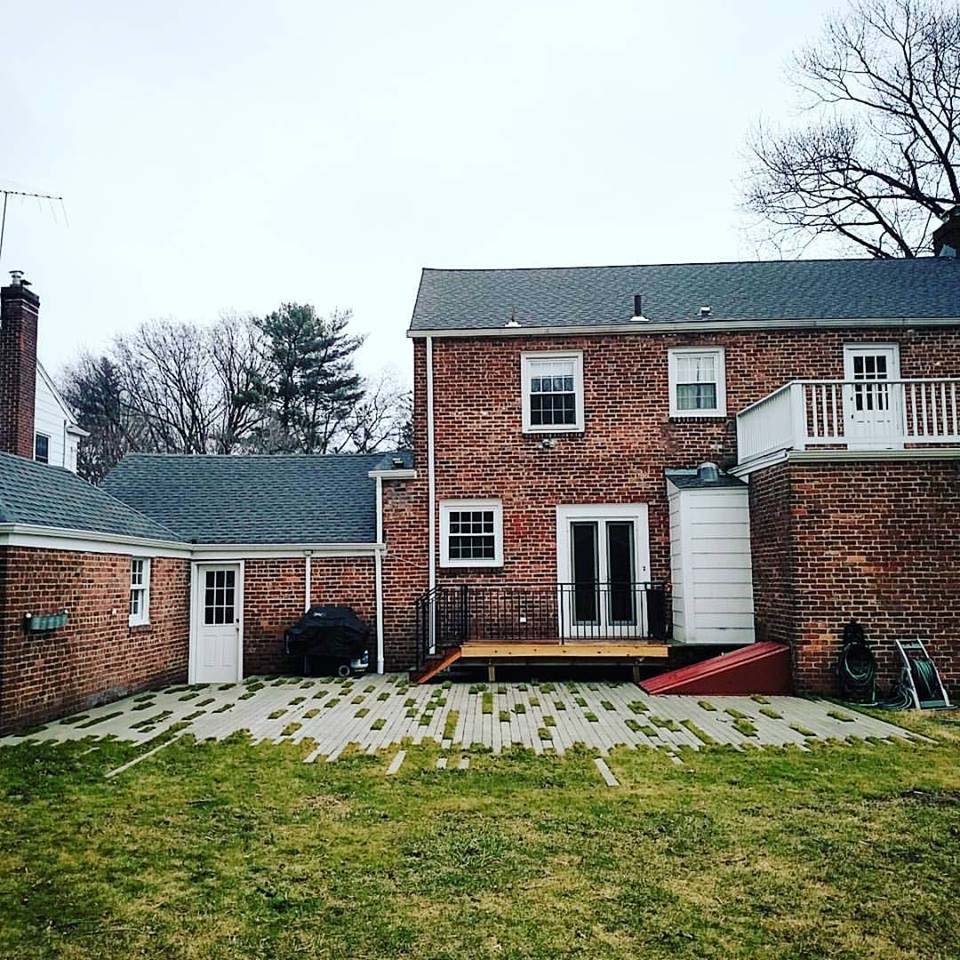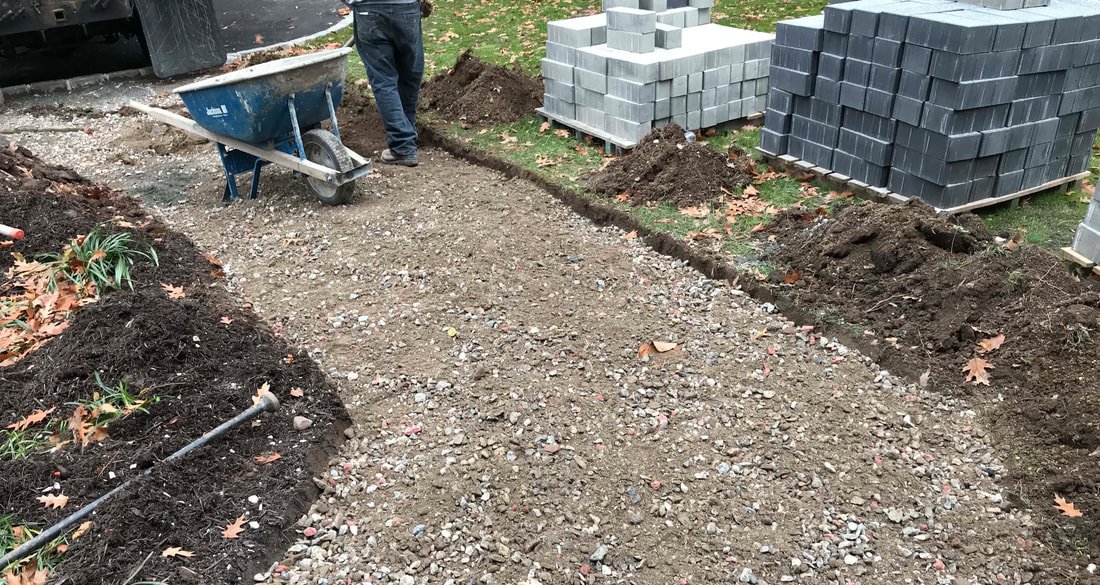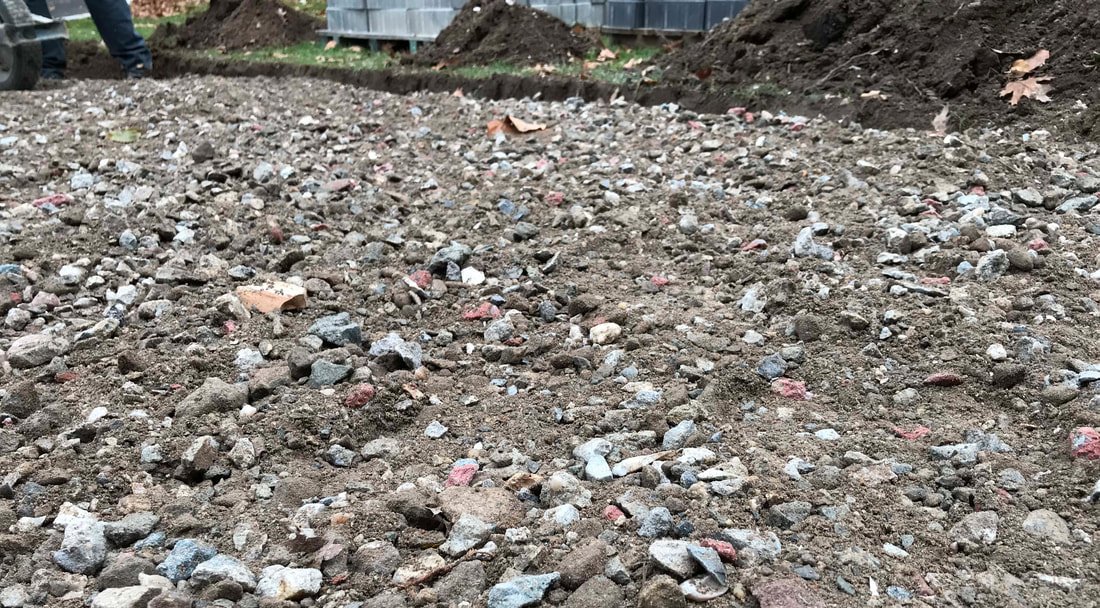How to create a sustainable walkway
We all love a great patio or walkway but the decisions you make about a hardscaping project will determine if it is sustainable or not. So, what exactly makes a patio or walkway sustainable? Let us break it down for you in this blog.
In this blog, I'm going to tell you how you can make your next hardscaping project as sustainable as possible. First things first, when I refer to hardscaping, I’m referring to the use of pavers to build a patio or walkway. Every hardscaping project we design and install has 4 parts to it. Each of these items has non-sustainable and sustainable options, each with it's own impact on the natural world. These elements are: excavation, demo, base and paver. Let’s go over each and talk about the good, the bad and the ugly of all of them.
Excavation
Of all the elements, excavation is the one that doesn't always have to be done. If you are replacing a walkway or patio, you might not really need lots of excavation because the space was dug out during the original project. If you do need to excavate, it’s best to find a home for the dirt on your property, that way, you eliminate the need to haul it off. Usually, soil is good for vegetable gardens and flower beds even if it may not look it. If you coordinate with other landscape projects, the soil can be used to overseed your lawn or improve drainage.
Demolition
Most homeowners don’t have newly constructed houses so they are always replacing something that is already there. The image above shows a walkway project we completed a few years back. The original walkway had an 8-inch concrete base with bricks on top of it. We had to remove all of the concrete to be able to install the new walkway. You can’t believe how much concrete came out of the ground. We ended up having to get rid of over 3 cubic yards of waste! All of it had to be taken offsite and dumped. When this happens, we use select waste facilities so we can have all of it recycled. This is the ideal way to deal with old concrete. If it goes into standard waste streams, it will be a long time before it degrades. In all of our projects, we typically recycle 95 to 100% of all our construction waste.
Base
The base is the most important factor to make your project sustainable. This is because the base will determine if you are allowing or cutting off the natural flow of rainwater into the ground. The normal process is that rain falls on the ground that is covered with grass and other plants and slowly infiltrates into the earth. When you use concrete, you are completely stopping that natural condition. In the grand scheme of things, all the rainwater that runs off goes into rivers and streams carrying pollutants and causing flooding. On a microlevel, if water isn’t allowed to go into the ground, it can create pooling and muddy spots at the edge of your new patio.
To fix this, we never use solid concrete as a base for the pavers. Instead, we use compacted recycled concrete (also known as RCA) and stone dust. The image above shows a base we have started to install using it. RCA is recycled concrete that has been broken into a combination of 1” and smaller pieces and then mixed together. It allows for some water to pass into the soil below. It’s not as good as areas covered in plants, but it’s much better than solid concrete.
Pavers
By the time you get to the pavers, you are either an eco-hero or not. However, paver selection is a big factor. It’s what everyone sees and thereby the most important part of the new space. This is also were design skills come in and help amplify all of the other green decisions along the way. For the project shown below, you can see that we used a paver that is really nice and modern. We eliminated a few of the pavers and let grass grow in. This creates a visually striking surface that is playful and sophisticated and also allows for rainwater to infiltrate into the ground.
Sustainable + Contemporary
Sustainable design always needs to be integrated within the overall aesthetic. Contemporary sensibilities are more naturally capable to including green features than traditional work. For one, it’s more playful and doesn’t presuppose a material. This gives us and the homeowner more leverage to find the best answer for a exterior space that has style and the planet part of its DNA, and always means the project is a bigger success for it.




